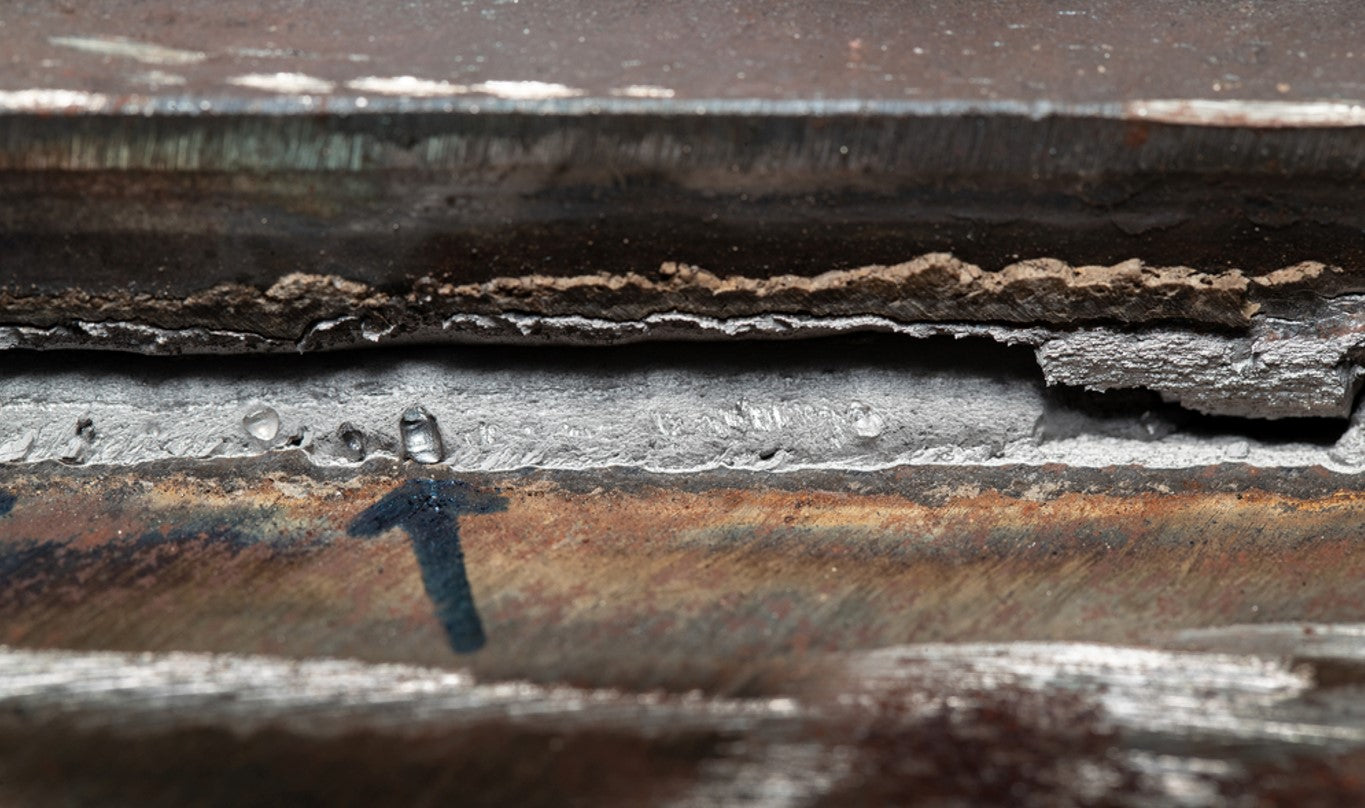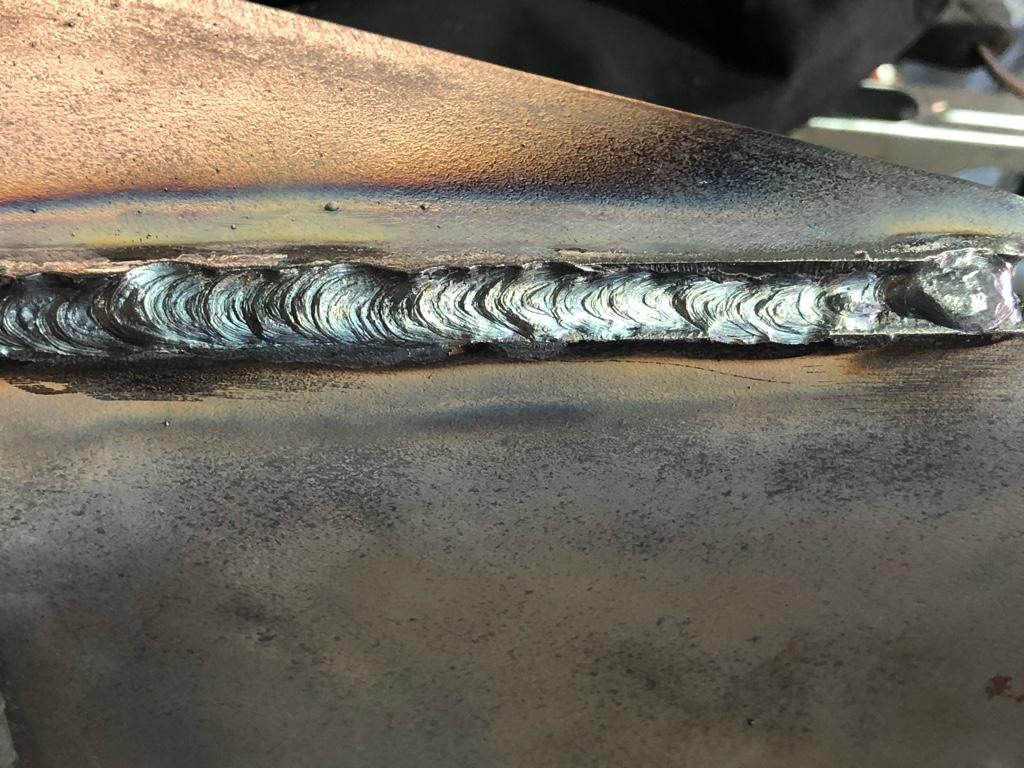Effective Ways to Prevent Weld Undercut in Your Welding Tasks
Effective Ways to Prevent Weld Undercut in Your Welding Tasks
Blog Article
Vital Tips for Welders: Protecting Against Undercut Welding and Ensuring Stronger Weld Joints
In the world of welding, attaining solid and long lasting weld joints is the keystone of creating top quality job. One usual challenge that welders typically experience is undercut welding, which can compromise the stability of the weld joint.

Comprehending Undercut Welding
Undercut welding is a typical welding flaw that takes place when the weld steel falls short to properly fill up the groove and leads to a groove-like anxiety along the weld grain. This flaw deteriorates the weld joint, making it at risk to cracking and failing under anxiety. Damaging can be triggered by various factors, consisting of excessive welding existing, high welding rate, inappropriate electrode angle, incorrect electrode dimension, and inadequate welding technique.
One of the major factors for undercut welding is a discrepancy between the welding current and the welding speed. If the welding current is expensive or the welding rate is as well quickly, the weld steel may not appropriately fill the groove, leading to undercutting. In addition, making use of an electrode that is too huge can lead to a comparable end result, as the excess steel can not appropriately move into the groove.
To prevent undercut welding, welders ought to ensure they are using the appropriate welding parameters, preserve an appropriate electrode angle, select the proper electrode dimension, and method appropriate welding methods. By dealing with these aspects, welders can minimize the threat of undercutting and develop stronger, extra trusted weld joints.
Correct Welding Technique
Effective welding strategy plays a critical duty in making certain the quality and integrity of weld joints. Appropriate welding strategy entails a combination of accuracy, skill, and adherence to ideal practices. One fundamental facet of correct welding strategy is maintaining the proper angle and range in between the welding weapon and the workpiece. Welders should also pay very close attention to the traveling speed and warm input to avoid problems like damaging, porosity, or insufficient fusion.
In addition, a steady and consistent hand movement is essential for creating strong and resilient weld joints. Welders should go for smooth, consistent activities to make sure even circulation of the weld product. Proper manipulation of the welding weapon and filler material is additionally essential to accomplishing optimal penetration and blend.
Furthermore, controlling the warm input and picking the appropriate welding parameters based on the material being bonded are important consider attaining high-quality welds - Preventing weld undercut. Welders should comply with the suggested settings offered by welding treatment specs and readjust them as needed based on the details demands of the job. By mastering correct welding methods, welders can dramatically boost the stamina and integrity of their weld joints
Selecting the Right Electrode
Preserving the correct angle and distance between the welding weapon and the workpiece is basic when considering the relevance of selecting the best electrode in welding applications. The option of electrode plays an essential role in figuring out the high quality and toughness of the weld joint. Electrodes are available in various types, each designed for particular objectives and products.
To start with, choosing blog the proper electrode diameter is necessary. Thinner electrodes are suitable for welding slim products, while thicker electrodes are better for thicker products and greater warmth applications. Matching the electrode size to the density of the work surface helps accomplish a well balanced weld.
Secondly, recognizing the product composition of the electrode is important. Different electrodes are made for welding details materials like steel, stainless steel, aluminum, or cast iron. Making use of the right electrode material ensures excellent fusion and minimizes the threat of defects in the weld.
Finally, taking into consideration the welding position and method is critical when choosing the electrode type. For instance, specific electrodes are much better fit for overhead or upright welding positions, while others function well for level or straight placements. Selecting the appropriate electrode based upon the welding technique enhances the overall weld quality and integrity.
Preparing the Base Metal
To make certain an effective welding procedure, what initial steps should be taken when preparing the base steel for welding? Appropriately preparing the base steel is important for accomplishing sturdy and solid weld joints. The primary step in preparing the base steel is to clean it completely to eliminate any type of impurities such as rust, paint, oil, or dirt. This can be done utilizing a cord chemical, grinder, or brush solvents. Furthermore, any kind of existing weld product or residue from previous welding ought to be removed to make sure a tidy surface for the new weld.

Conducting Post-Weld Examinations

After carrying out these evaluations, welders should contrast the results against market requirements and task needs to make sure that the weld joint satisfies all required standards. Any variances or insufficiencies uncovered during the post-weld inspection should be promptly dealt with via proper rehabilitative actions to ensure the weld's integrity. By diligently doing post-weld assessments and without delay resolving any type of problems, welders can promote the top quality and reliability of their job, ultimately adding to the safety and longevity of the welded frameworks.
Verdict

To conclude, protecting against undercut welding and ensuring more powerful weld joints require a combination of proper welding strategy, selecting the right electrode, preparing the base metal properly, and conducting post-weld inspections. By comprehending the reasons for undercut welding and implementing the needed preventative measures, welders can create top notch weld joints that fulfill industry criteria and guarantee the architectural honesty of the bonded elements.
Undercut welding is a common welding defect that takes place when the weld steel falls short to properly load the groove and results in a groove-like clinical depression along the weld grain (Preventing weld undercut). Undercutting can be created by various elements, including extreme welding present, high welding rate, incorrect electrode angle, wrong electrode size, and poor welding method
One of the primary reasons for undercut welding is an inequality between the welding existing and the welding speed. If the welding current is as well high or the welding speed is also quickly, the weld steel might not properly fill up the groove, leading to damaging.Maintaining the right angle Recommended Reading and distance between the welding gun and the workpiece is basic when considering the significance of choosing the best electrode in welding applications.
Report this page